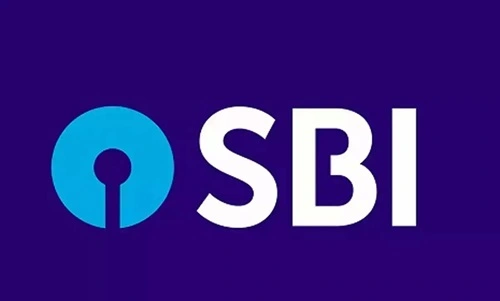As of early 2025, the State Bank of India (SBI), the nation’s largest lender, reported a significant 83% year-over-year increase in standalone net profit for the quarter ending December 31, 2024, reaching ₹16,891 crore. This growth was driven by robust loan demand, with domestic loans rising by 14.06%, including a 14.86% increase in corporate loans and an 11.65% rise in retail personal loans.
Strategically, SBI plans to expand its branch network by adding 500 new branches in the financial year 2025, aiming to enhance its reach and customer service.
Additionally, the bank intends to raise approximately ₹50 billion through Basel III-compliant additional Tier-I perpetual bonds by the end of February 2025 to strengthen its capital base.
Despite these positive developments, SBI’s domestic net interest margin declined to 3.15% from 3.34% a year earlier, indicating increased competition in the lending market.
Overall, SBI’s strong financial performance and strategic initiatives underscore its commitment to maintaining a leading position in India’s banking sector now let’s have a glance on the detailed SWOT Analysis of SBI.
Strengths
- Robust Financial Performance: In the fiscal year ending March 31, 2024, SBI reported a net profit of ₹183.31 billion ($2.17 billion) in the second quarter, marking a 28% increase from the previous year’s ₹143.3 billion. This growth was driven by higher non-interest income and lower operating expenses, despite increased provisions.
- Extensive Branch Network: As of March 2024, SBI operates 22,542 branches across India, underscoring its significant footprint in the country’s banking sector. In the previous fiscal year, the bank inaugurated 137 new branches, with 59 dedicated to serving rural communities, highlighting its commitment to financial inclusion.
- Market Leadership: SBI holds a substantial market share, with 22.55% in deposits and 19.06% in advances as of March 2024. The bank’s balance sheet size surpassed ₹61 lakh crore, reflecting its dominant position in the Indian banking industry.
- Digital Initiatives: On its 69th foundation day, July 1, 2024, SBI unveiled 11 new initiatives aimed at enhancing the banking experience and expanding accessibility. These initiatives encompass digital advancements, improved customer services, and specialized products for diverse segments, reinforcing SBI’s commitment to innovation.

Weaknesses
- Declining Net Interest Margin (NIM): SBI’s domestic NIM decreased to 3.27% in the second quarter of FY2024, down from 3.43% a year earlier. This decline indicates reduced profitability from core lending activities, necessitating strategic measures to enhance interest income.
- Rising Provisions: The bank experienced a significant increase in provisions for loan losses, which rose by 70% year-on-year to ₹45.18 billion in the first quarter of FY2024. This surge reflects challenges in asset quality and the need for stringent risk management practices.
- Dependence on Domestic Market: While SBI has a vast domestic presence, its international operations are relatively limited. This concentration exposes the bank to domestic economic fluctuations and regulatory changes, underscoring the need for diversification.
Opportunities
- Focus on Small Deposits: SBI plans to concentrate on small-ticket deposits to enhance liquidity, targeting accounts under the “Jan Dhan” scheme, which serves low-income groups. This strategy aims to bolster the bank’s deposit base and promote financial inclusion.
- Expansion of Digital Services: The bank’s recent digital initiatives present opportunities to attract tech-savvy customers and streamline operations. By leveraging technology, SBI can enhance customer experience and operational efficiency.
- Strategic Divestments: SBI’s plan to sell its 24% stake in Yes Bank, valued at $2.2 billion, by the end of March 2025, offers an opportunity to unlock capital and strengthen its balance sheet. This divestment aligns with the bank’s strategic objectives and regulatory compliance.
Threats
- Regulatory Scrutiny: Indian banks, including SBI, are reviewing their exposure to corporate entities following allegations of financial misconduct. Such scrutiny can impact lending practices and necessitate enhanced due diligence, affecting operational dynamics.
- Competitive Pressure: The Indian banking sector is witnessing increased competition from private sector banks and fintech companies. This competition challenges SBI to continuously innovate and maintain its market share.
- Economic Uncertainties: Global economic fluctuations and domestic challenges, such as inflation and policy changes, can impact SBI’s performance. The bank must navigate these uncertainties to sustain growth and profitability.
Conclusion
In 2025, the State Bank of India stands as a pillar of the Indian banking sector, leveraging its extensive network, robust financial performance, and commitment to innovation. However, challenges such as declining net interest margins, rising provisions, and regulatory scrutiny necessitate strategic responses. By focusing on opportunities like expanding digital services, targeting small deposits, and executing strategic divestments, SBI can strengthen its position and continue to drive financial inclusion and economic growth in India.
Anantha Nageswaran is the chief editor and writer at TheBusinessBlaze.com. He specialises in business, finance, insurance, loan investment topics. With a strong background in business-finance and a passion for demystifying complex concepts, Anantha brings a unique perspective to his writing.


